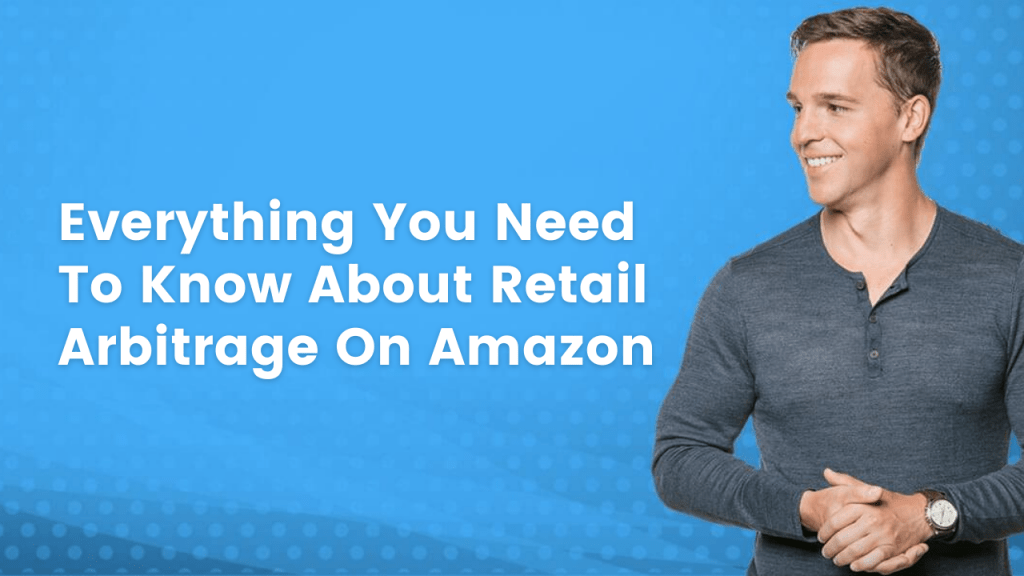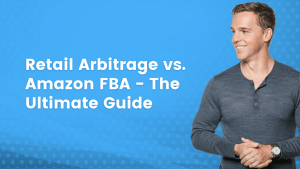Everything You Need To Know About Retail Arbitrage On Amazon

Learn more about retail arbitrage on Amazon, and get expert pro tips along the way.
Selling something for more than you paid for it has been around for centuries. That’s basic commerce. But what about retail arbitrage? Or, selling someone else’s product for more than you paid for it. It’s been around for years, but it’s still a mystery to most people.
So let’s talk about retail arbitrage on Amazon to learn more about why it is, or isn’t, the best business model for your next venture.
What is retail arbitrage?
Retail arbitrage is buying products at a discount, and selling them for a profit. Sounds fancy and there’s a little more to it, but it’s basically just flipping products on platforms like Amazon or eBay. Let’s break it down with an example.
You visit a store like Walmart, and you notice that binders are on sale. They’re discounted from $6 each to $3. This is an opportunity for retail arbitrage.
You buy as many binders as you can, let’s say 50 of them. And instead of listing all 50 for $6 apiece, you list them for $5.80. Why? Because this price discount incentivizes customers to buy binders from you, instead of other sellers. If you sell all 50 binders, you earn $290 in revenue and $140 in net profit.
Why do people become retail arbitrage sellers?
First, there’s a low barrier to entry. You only need a couple hundred bucks to buy discounted products in bulk. You need an Amazon seller account. And you need shipping supplies if you don’t want to sign up for the Amazon FBA program. That’s it.
It’s easy, there are low start-up costs, and you can start making sales the very same day. Plus, since you’re sourcing products that are already made, there’s no dealing with suppliers or manufacturers.
Is retail arbitrage a sustainable business model?
Yes and no. Let’s start with the “yes” first. Retail arbitrage works because prices are relative to location. If you live in Chicago, those binders may cost $6.50 at Office Depot. But if you live in New York, they’re $6.99 from Target. The city you live in and the retailer you visit determine how much you pay.
Retail arbitrage sellers can undercut nearly any price. This is because they buy products on sale at enormous discounts. And retail arbitrage sellers get to pass on some of that discount to online shoppers.
Let’s look at this from the consumer’s perspective. Instead of braving Chicago’s winter weather for a $6.50 binder, they get to stay inside and buy the same product for only $5.80 from an arbitrage seller. This is what keeps the cycle moving.
Now let’s explore why retail arbitrage might not work for you in the long term. First, it’s getting harder to flip discounted products on Amazon. The retail giant is cracking down on sellers who don’t have explicit permission to sell whatever it is they’re selling.
Amazon wants to know exactly what’s being sold, who’s selling it, and where it comes from. Retail arbitrage muddies this up, making it difficult to know whether products are counterfeit or not. This doesn’t seem like a big deal for products like pens. But it does matter for things like over-the-counter medications. Either way, if you’re caught selling products without authorization, Amazon might shut your account down.
Second, if you want to quit your day job and jump into retail arbitrage, you have to be comfortable with bulk. We’re talking about lots and lots of products. Remember the example from earlier? Fifty binders for $140 in profit. That’s not bad for a couple of hours of work, but it’s not enough to pay the bills.
So the next time you head to Walmart, you’re going to need hundreds of binders. With retail arbitrage, bulk is where you make your profit. And you’ll need plenty of space to store products until they sell. If you don’t have the space or you just don’t want to deal with shipping, you might qualify for Amazon FBA services. But those fees are going to cut into your already high overhead costs.
Lastly, retail arbitrage is incredibly difficult to scale. Sure, you can sell more products. But eventually, you’ll run out of space or you’ll have to pay those FBA fees. Amazon’s program has reasonable fees if you sell your own product and keep overhead down. This is something you simply can’t do with arbitrage.
Retail arbitrage, step-by-step
Let’s say you’ve weighed the pros and cons, and you want to try arbitrage anyway. Here’s exactly how to get started, and how much it’ll cost every step of the way.
Get a seller’s account
Choose from an individual account, or a professional one. Both have fees that cut into your profit margins.
If you don’t want to deal with shipping, inventory storage, or customer service, you can opt into the Amazon FBA program. The program also makes your products eligible for Amazon Prime.
Source your products
Put on your best walking shoes and hit your local retailers like Walmart, Target, Best Buy, and Office Depot. Look for markdowns, clearance sales, and heavily discounted products. Remember, your profits are in bulk. So you’ll need lots of whatever your product is to make your time worth it.
Price, list, and sell
Do some math to find the ideal price for your products. The final cost has to be higher than what you paid for it, and lower than the average sticker price.
Before you post products online, remember that you’re taking a serious risk with brand regulations. Some products require permission to sell, and if you don’t have permission, there’s a good chance you’re going to be shut down.
List your product on Amazon or eBay, and ship products as orders come in — or let Amazon FBA do it for you if you opted into the program.
Final thoughts
Retail arbitrage is easy, but it’s not for everyone. There’s an inherent risk, there’s not a lot of profit per unit, and it’s hard to scale. In short, retail arbitrage is a better side hustle than it is a business model.
Curious about how other people are making money on Amazon? Check out this guide on retail arbitrage vs. private labels to see how it’s done, or explore other popular passive income models here.
